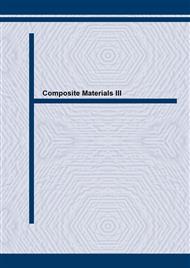[1]
J. M. Johnson, R. S. Yahya: IEEE Antennas and Propagation Magazine. Vol. 39 (1997), p.7.
Google Scholar
[2]
B. Chambers, A. Tennant: IEEE Proc.-Radar, Sonar Navig. Vol. 143 (1996), p.23.
Google Scholar
[3]
E. Michielssen, J. M. Sajer, S. Ranjithan and R.Mittra: IEEE Transactions on Microwave Theory and Techniques, Vol. 41 No.6/7 (1993), pp.1024-1031.
DOI: 10.1109/22.238519
Google Scholar
[4]
H. Mosallaei, R. S. Yahya: IEEE Transactions on Antennas and Propagation, Vol. 48 (2000), p.1594.
Google Scholar
[5]
K. J. Rao, Y. Gou: Journal of UEST of China, Vol. 29 (2000), p.54.
Google Scholar
[6]
Z.P. Gan, J.G.. Guan et al: Design of Broadband, Thin-layer Rader Absorbing Materials Using Genetic Algorithms (Acta Electronica Sinica (Accepted)).
Google Scholar
[7]
K.J. Vinoy and R.M. Jha: Sadhana,Vol. 20 (1995), p.815.
Google Scholar
[8]
K. C. Pitman, M. W. Lindley, D. Simkin, J. F. Cooper: IEEE Proceedings F, Vol. 138 (1991), p.223.
Google Scholar


